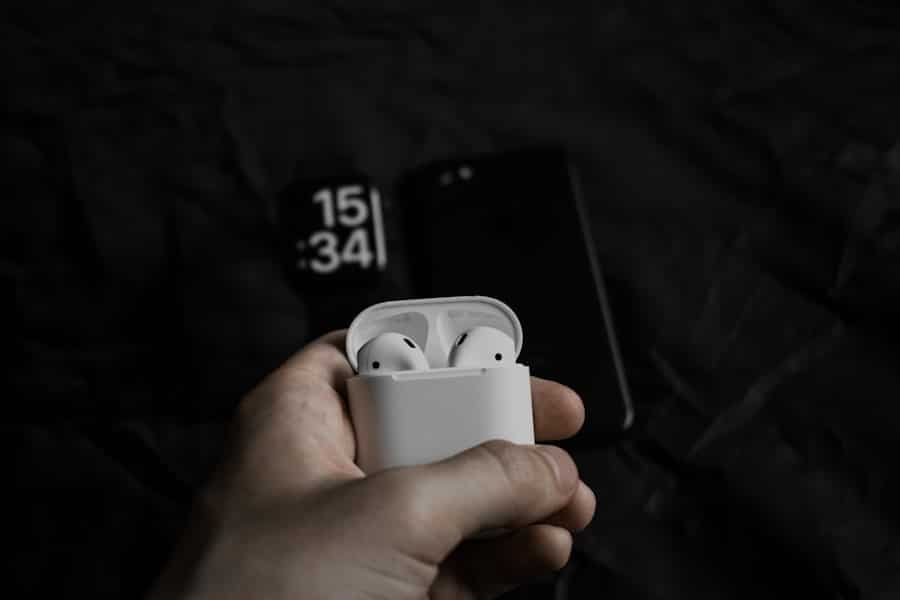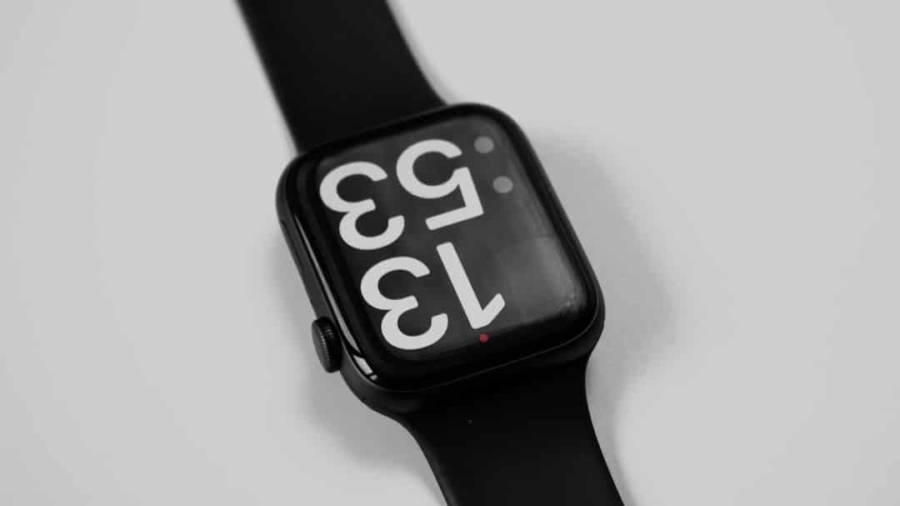The advent of 5G technology marks a significant leap in the evolution of mobile communication, promising to revolutionize how we connect, communicate, and interact with the world around us. Unlike its predecessors, 5G is designed to provide ultra-fast data transfer speeds, reduced latency, and the ability to connect a vast number of devices simultaneously. This new generation of wireless technology operates on a higher frequency spectrum, which allows for greater bandwidth and improved performance.
As a result, 5G is not merely an incremental upgrade; it represents a paradigm shift that has the potential to transform various sectors, including healthcare, transportation, entertainment, and particularly the realm of wearable devices. Wearable technology has gained immense popularity in recent years, with devices such as smartwatches, fitness trackers, and health monitors becoming commonplace. The integration of 5G into these devices is set to enhance their functionality and user experience significantly.
With the ability to transmit data at lightning speeds and support real-time applications, 5G technology will enable wearables to perform more complex tasks and provide users with richer, more interactive experiences. As we delve deeper into the advantages of 5G for wearable devices, it becomes clear that this technology is not just about faster connections; it is about unlocking new possibilities that were previously unimaginable.
Key Takeaways
- 5G technology significantly boosts connectivity and data transfer speeds for wearable devices.
- Enhanced energy efficiency leads to improved battery life in wearables.
- 5G enables advanced integration of augmented reality (AR) and virtual reality (VR) in wearables.
- Health, fitness monitoring, and smart clothing technologies benefit from 5G capabilities.
- Future 5G wearables face opportunities for innovation alongside challenges in implementation.
Advantages of 5G for Wearable Devices
The advantages of 5G for wearable devices are manifold, fundamentally altering how these gadgets operate and interact with users. One of the most significant benefits is the enhanced connectivity that 5G provides. With its ability to support a massive number of devices within a small area, 5G networks can facilitate seamless communication between wearables and other smart devices.
This interconnectedness allows for a more cohesive ecosystem where data can be shared effortlessly across platforms. For instance, a smartwatch can communicate with a smart home system to adjust lighting or temperature based on the wearer’s preferences or health metrics. Moreover, the low latency characteristic of 5G networks is particularly advantageous for applications requiring real-time feedback.
For example, in sports and fitness contexts, wearables can provide instantaneous data on heart rate, oxygen levels, and other vital signs. This immediacy can be crucial for athletes who rely on precise metrics to optimize their performance.
The implications of such advancements are profound, as they pave the way for more responsive and adaptive wearable technologies.
Enhanced Connectivity and Data Transfer Speeds

One of the hallmark features of 5G technology is its unparalleled data transfer speeds, which can reach up to 10 Gbps under optimal conditions. This capability is particularly transformative for wearable devices that often rely on continuous data exchange for functionality. For instance, fitness trackers that monitor physical activity can now upload data to cloud services almost instantaneously, allowing users to access their performance metrics in real time.
This rapid data transfer not only enhances user experience but also enables more sophisticated analytics and insights into health and fitness trends. Furthermore, the enhanced connectivity provided by 5G allows for a greater number of devices to operate simultaneously without compromising performance. In crowded environments such as concerts or sporting events, where numerous users are connected to the same network, 5G ensures that wearables maintain their functionality without lag or disconnection.
This is particularly important for applications like augmented reality (AR) or virtual reality (VR), where delays can significantly detract from the user experience. The ability to connect multiple wearables seamlessly opens up new avenues for collaborative experiences, such as group workouts or shared gaming sessions that require real-time interaction among participants.
Improved Battery Life and Energy Efficiency
As wearable devices become more advanced and feature-rich, battery life remains a critical concern for manufacturers and users alike. The introduction of 5G technology brings with it innovations in energy efficiency that can significantly extend the operational lifespan of these devices. One of the key advancements is the use of advanced power-saving techniques that are inherent in 5G networks.
These techniques allow wearables to enter low-power states when not actively transmitting data, thereby conserving battery life without sacrificing performance. Additionally, the efficiency of data transmission in 5G networks means that wearables can send and receive information using less energy compared to previous generations of mobile technology. For example, a smartwatch that utilizes 4G might consume considerable power while maintaining a constant connection to the network.
In contrast, a 5G-enabled device can achieve similar connectivity with reduced energy expenditure due to its optimized protocols. This improvement not only enhances user convenience by reducing the frequency of charging but also contributes to the overall sustainability of wearable technology by minimizing electronic waste associated with short-lived batteries.
Integration of Augmented Reality and Virtual Reality
The integration of augmented reality (AR) and virtual reality (VR) into wearable devices represents one of the most exciting prospects enabled by 5G technology. With its high data transfer speeds and low latency, 5G creates an ideal environment for immersive experiences that require real-time processing and interaction. For instance, smart glasses equipped with AR capabilities can overlay digital information onto the physical world in real time, providing users with contextual data as they navigate their environment.
This could range from navigation prompts while walking through a city to displaying health metrics during a workout. In the realm of VR, 5G enables more sophisticated applications that require substantial bandwidth for high-quality graphics and seamless interaction. Wearable VR headsets can leverage 5G networks to stream content without lag or buffering, allowing users to engage in fully immersive experiences whether they are gaming or participating in virtual training sessions.
The potential applications extend beyond entertainment; for example, medical professionals could use VR simulations for training purposes or remote consultations with patients could be conducted in a virtual environment that feels more personal and engaging.
Expansion of Health and Fitness Monitoring Capabilities

The health and fitness sector stands to benefit immensely from the capabilities offered by 5G technology in wearable devices. With enhanced connectivity and data transfer speeds, wearables can monitor a wider array of health metrics with greater accuracy and immediacy. For instance, advanced sensors can track not only heart rate but also blood pressure, glucose levels, and even hydration status in real time.
This comprehensive monitoring allows users to gain deeper insights into their health and make informed decisions about their lifestyle choices. Moreover, the integration of AI algorithms with 5G-enabled wearables can facilitate predictive analytics that help users anticipate health issues before they arise. For example, if a fitness tracker detects irregular heart patterns over time, it could alert the user to seek medical advice proactively.
Additionally, healthcare providers can utilize data collected from wearables to tailor treatment plans based on individual patient metrics rather than relying solely on periodic check-ups. This shift towards continuous monitoring represents a significant advancement in personalized healthcare and empowers individuals to take charge of their well-being.
Impact on Smart Clothing and Fashion Tech
The intersection of fashion technology and wearable devices is another area poised for transformation through 5G connectivity. Smart clothing—garments embedded with sensors capable of monitoring various physiological parameters—can leverage 5G networks to transmit data seamlessly to smartphones or cloud platforms for analysis. For instance, a smart shirt could monitor heart rate variability during exercise while providing real-time feedback on performance metrics through an accompanying app.
Imagine a scenario where a user wearing smart shoes receives navigation prompts directly through haptic feedback in the soles as they walk through unfamiliar terrain. Such innovations not only elevate functionality but also create unique selling propositions for fashion brands looking to differentiate themselves in a competitive market.
The potential for customization also expands; users could personalize their smart clothing based on their preferences or even receive tailored recommendations based on their activity levels.
Future Opportunities and Challenges for 5G-enabled Wearable Devices
As we look toward the future of 5G-enabled wearable devices, numerous opportunities arise alongside significant challenges that must be addressed. On one hand, the potential for innovation is vast; industries such as healthcare could see transformative changes through remote patient monitoring systems that utilize wearables equipped with advanced sensors and real-time data transmission capabilities. Similarly, sectors like sports could benefit from enhanced training tools that provide athletes with immediate feedback on performance metrics.
However, these advancements come with challenges that need careful consideration. Privacy concerns are paramount as wearables collect sensitive health data that could be vulnerable to breaches if not adequately protected. Ensuring robust cybersecurity measures will be essential in maintaining user trust and compliance with regulations such as GDPR or HIPAA in healthcare contexts.
Additionally, there is the challenge of ensuring equitable access to these technologies; as 5G infrastructure continues to roll out globally, disparities in access could exacerbate existing inequalities in health outcomes or technological adoption. In conclusion, while the integration of 5G technology into wearable devices presents exciting possibilities for enhanced connectivity, improved functionality, and innovative applications across various sectors, it also necessitates a proactive approach to address potential challenges related to privacy and accessibility. The future landscape will likely be shaped by how effectively stakeholders navigate these complexities while harnessing the transformative power of 5G technology.
In exploring the transformative impact of 5G on next-generation wearable devices, it’s interesting to consider how advancements in technology are shaping various industries. For instance, the article on


